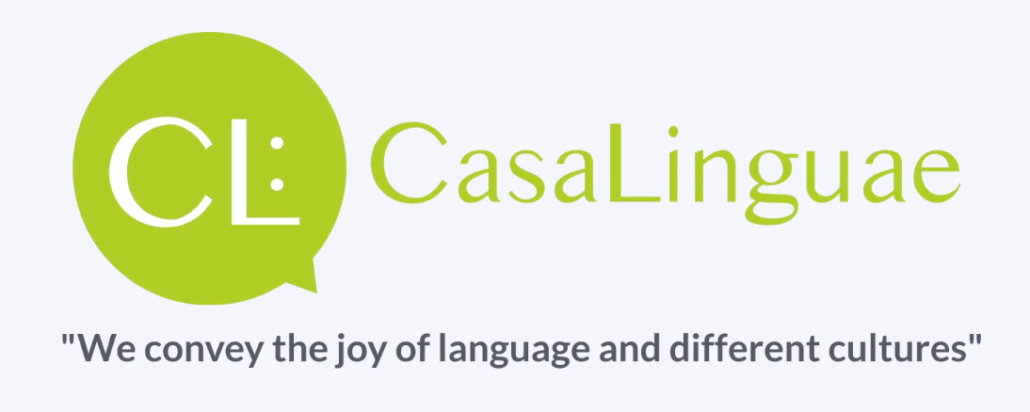Learning languages aligned with how the brain works
»In school, some students seemed to learn foreign languages effortlessly, while others found it extremely difficult. Were the former more intelligent than the latter? Probably not. It was likely, at least in part, due to the teaching approach – something we can reasonably assume today, in times of brain-compatible learning.«
Our goal at CasaLinguae is to support our course participants in learning a language sustainably. This is only possible if we as trainers make sure that we take learning types into account when designing our lessons.
Language courses at CL: CasaLinguae
Since our brains all ‘tick’ differently and therefore each individual participant learns differently in language lessons, it is important to respond precisely to the needs of the individual person or group. Even before the lesson begins, the trainer should ask brief questions to find out how each participant likes to learn and what they need to get the best out of themselves.
Some may find it easier to learn if they can move around; others may be used to eating while learning and some may memorize vocabulary through storytelling. We plan our language lessons and classes based on the individual learning styles of the participants.
I believe that in a private language school it should be possible to integrate the learning types into the design of the lessons, as this is the only way we can guarantee that the majority of participants are satisfied with themselves and say at the end of the course: ‚I have learned something and I can actually use what I have learned.
My school days
When I think back to my school days, we mostly had frontal teaching. The students were not involved in the lessons and there was no focus on how the individual student could learn better or which method they might benefit from.
Designing lessons in a way that is suitable for different types of learners gives participants the chance to learn new vocabulary or sentences in a foreign language in a different way and to memorize them better. Don’t you think that learning is more relaxed with background music or (healthy) snacks at the table?
Some would immediately answer ‘yes’, others would not. And that’s exactly the point. Finding out what each individual needs in the classroom in order to achieve the set goal.
Learning vocabulary
The challenge with memorization is that although course participants remember the individual words, they struggle when it comes to forming complete sentences. To ensure that participants not only recognize the individual words but also understand the whole context, it is particularly important in language lessons to actually use the vocabulary they have learned.
One of my tips is to incorporate five to seven words into everyday work or private life. The words are selected in class and you think together about where you could possibly incorporate them, e.g. in an email, in conversations with colleagues, friends or family.
One method that has often proved successful in lessons is to create an image in the participants‘ minds that they remember – a mnemonic, so to speak.
Learning environment
It is important to find out when the learner feels most comfortable. Ideally in or even before the first lesson. This is the only way to ensure lasting learning success. A few questions are enough to see what he or she needs to learn a language sustainably.
There are many things that learners cannot influence. For example, if you only have time to attend a language course in the evening, but you are not the type of person who likes to learn in the evening, then learning can be difficult.
However, if the trainer is aware of this, he or she can check what other conditions the learner needs to support their learning. Perhaps it helps to work on certain topics in small groups and the learners forget that it is already 8 p.m. and they already want to sit on the couch.
Bottom line
Learning languages is particularly sustainable if the motivation to learn the language is high. Learning is an individual process, everyone learns using their own methods and at their own pace.
»Nothing comes from nothing«, already said Vera F. Birkenbihl.
Learning without doing anything works for no one. It is also beneficial for our brain if we give learning a good structure and, for example, quickly put new vocabulary into a context that we can remember more easily. Find out for yourself what type of learner you are and at what times you can learn efficiently.
***
Learning types & styles
Knowing your learning style helps you to absorb information more quickly and easily. This makes learning and training all the more fun. Find out today what type of learner you are and what influences your learning.
Excerpts from the magazine TRAiNiNG | Article: „My brother goes to school



